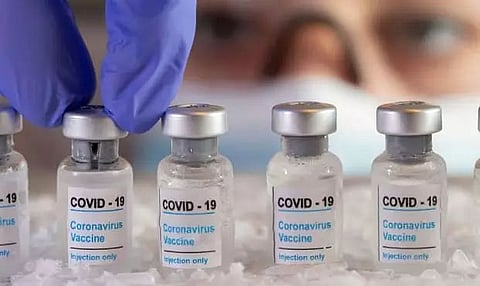
- Home
- Live Blog
- Breaking News
- Top Headlines
- Cities
- NE News
- Sentinel Media
- Sports
- Education
- Jobs

The Union government's liberalised and accelerated strategy of opening vaccination for all citizens above the age of 18 years has triggered hopes of lowering the intensity of the spread of the COVID-19 virus infection. However, the trajectory of the current wave of new positive cases in India remains unpredictable as vaccine deliveries to every nook and corner continue to face production and logistics challenge. Lockdowns have returned to several States as the last resort where the pandemic situation has become unmanageable for the Health authorities. Mass exodus of migrant workers from Delhi, Rajasthan following the imposition of lockdown has raised fresh apprehension of a cascading effect on life and livelihood. This has brought to the fore a debate on the effectiveness of lockdown as a containment strategy in the backdrop of experiences of last year's nationwide lockdown. Health Ministry data reveals that from 20,000 cases reported on January 1, the country has almost 10 times more cases (more than 2,00,000 cases) being reported daily since April 15. In the last 11 days from April 9 till April 20, new cases have almost doubled from 1.31 lakh to 2.73 lakh. As many as 20 States are displaying an upward trajectory in daily new cases, said the Ministry and cautioned that the next three week remains critical. A gradual increase in positive cases has prompted the Assam government to impose new restrictions which include closure of all shops and markets places by 6 pm, reducing attendance in government and private offices as well as in educational institutions, running of public transport with half of its passenger-carrying capacity and capping the number at social and religious gatherings. These restrictions are aimed at containing the spread of the virus so that the Health system is not overwhelmed and trigger a crisis situation like that in the worst-hit States.
However, enforcement of the restrictions cannot be left to administration alone and citizens must take pro-active roles in compliance as the measures have been taken with the primary objective of protecting them from infection and fatalities. Any leniency on the part of the administration towards the wilful violators could be counter-productive and may push the State to take harsher restrictive measures which is not warranted. Imposition of penalty on people dropping face masks at public places in Guwahati city and different towns are expected to act as deterrents and also caution the people against the pandemic situation deteriorating further on account of failure to strictly follow the COVID-appropriate behaviours. The vaccine demands for the States will go up after reduction of the age bar. The available stock in the State will barely last for a week and will need replenishment. The State will also have to open more vaccination centres to accommodate the new age groups; and, simultaneously ensure the physical-distancing norms at the vaccination centres. Special vaccination camps in educational institutions may be explored to prevent rush at the existing centres. The liberalised vaccine regime will have State-specific issues and will require State-specific strategies. The Central government has said that the States have been empowered to procure additional vaccine doses directly from the manufactures as well as open up vaccination to any category of people above the age of 18 years. Vaccine manufacturers are now empowered to release up to 50% of their supply to the State governments and in the open market at a pre-declared price. The Health Ministry has also told the private hospitals and private enterprises to procure vaccine supplies from channels other than that of the Government of India. Besides, imported, fully ready-to-use vaccines are to be entirely utilised in the other-than government channel. As vaccine doses for all citizens above 45 years in the government vaccination centres have been given free of cost, the issue of extending the same benefit in these centres for the age group of 18-45 years has come to the fore. Vaccine manufacturers have been incentivised by the Central government to further scale up production, and therefore, the prices of vaccines to be supplied by the manufacturers to the State governments should be reasonable. The Centre and the States will have to ensure that the price of vaccines does not add to vaccine hesitancy, particularly among the young population and also the economically weaker sections in the age group of 18-45 years. Vaccinating the young population has become important as new variants of the virus have equally infected them in the current wave and also causing fatalities unlike the first wave last year. The vaccine-delivery process is poised to encounter many challenges and till a significant section of the eligible population can be vaccinated for achieving the desired herd immunity, testing, tracking treating will continue to be the primary focus of both the Centre and the States to prevent spread of infection. Even though the positivity rate in Assam is still below the threshold limit of 5%, there is no room for any complacency as new variants of the virus are infecting at a frightening speed.